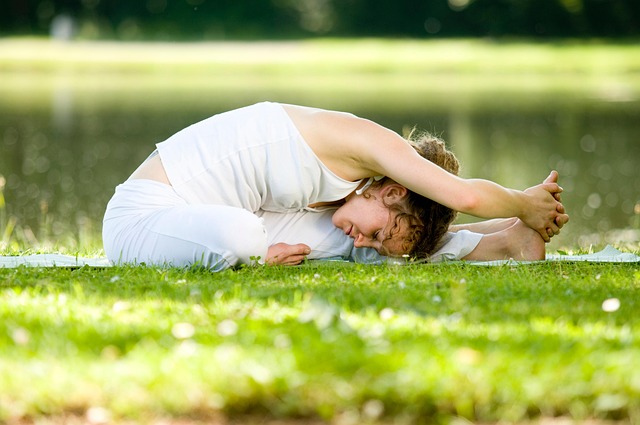In the world of fitness, flexibility is often seen as a separate goal from strength, but the two are deeply intertwined. A specific type of flexibility training—torsional stretch—focuses on rotational movements that engage both the soft tissues and the stabilizing muscles of the core. By incorporating torsional stretch into a regular training routine, athletes and fitness enthusiasts can unlock greater range of motion, improve neuromuscular coordination, and reduce the risk of injury. This article explores the science behind torsional stretch, outlines key exercises, and shows how to weave these movements into a balanced program for maximum benefit.
What Is a Torsional Stretch?
A torsional stretch is a controlled rotational movement that stretches the spine, pelvis, hips, and surrounding musculature in a way that simulates real‑world twisting actions. Unlike static side‑bending or forward‑bending stretches, torsional stretch requires the body to rotate around an axis, engaging deep core stabilizers and promoting mobility in the thoracic and lumbar spine.
- Rotational Focus: Movement occurs around the central axis of the body, targeting obliques, lumbar multifidus, and hip rotators.
- Dynamic Engagement: Muscles are kept under tension throughout the rotation, improving muscle‑tendon unit elasticity.
- Functional Application: The pattern mirrors many athletic motions such as pitching, throwing, or kicking.
The Core Connection: Why Torsional Stretch Matters for Strength
Core strength is not only about building abs and back muscles; it is also about creating a stable foundation that can withstand rotational forces. Torsional stretch strengthens the core’s ability to resist unwanted motion by conditioning the deep stabilizers through repetitive, controlled rotations.
“A strong core is a well‑trained core, and torsional stretch trains the core to move, not just stay still.” – Dr. Elena Vasquez, Kinesiologist
When the obliques, transverse abdominis, and multifidus learn to contract rhythmically during rotation, they provide better spinal support during heavy lifts, sprinting, or any activity that requires sudden changes in direction.
Functional Benefits for Athletes and Everyday Movers
1. **Enhanced Range of Motion** – Rotational mobility increases the ability to perform activities that demand a wide arc, such as a golf swing or a tennis serve.
2. **Improved Stability** – A core that can resist rotational loads translates into lower injury rates during collisions or falls.
3. **Better Performance** – Power generated in the hips and spine during sport motions is amplified when the body can rotate efficiently.
4. **Reduced Lower Back Pain** – Regular torsional stretch balances the musculature around the lumbar spine, alleviating chronic stiffness.
Key Torsional Stretch Exercises
Below are five foundational movements that can be incorporated into any routine. Each exercise focuses on controlled rotation, gradual progression, and proper breathing.
-
Seated Torso Twist
Sit on a mat with legs crossed, back straight. Place one hand on the opposite knee and the other on the floor beside the back. Gently twist the torso toward the hand on the floor, feeling the stretch along the spine and the side of the hip. Hold 15–30 seconds, then switch sides. -
Standing Side Bend with Rotation
Stand with feet hip‑width apart. Hold a light dumbbell in one hand and extend the opposite arm overhead. Rotate the torso toward the dumbbell while keeping the hips square. This exercise activates obliques and tests rotational control. -
Supine Torso Rotation
Lie on your back with knees bent and feet flat. Drop both knees to one side while keeping the shoulders grounded. Use the arm opposite the side of the knees to deepen the stretch, ensuring the head turns to face the opposite side. Hold, then repeat on the other side. -
Hip‑Center Rotation (Pigeon Variation)
From a lunge position, rotate the front leg outward while keeping the back leg straight behind you. This move stretches the hip rotators and encourages controlled spinal rotation. -
Wall Twist
Stand perpendicular to a wall, place one hand on it, and rotate the torso away from the wall. This creates a gentle, full‑body stretch that engages the thoracic spine and upper back.
Designing a Progression Plan
Progression is essential to avoid plateaus and over‑stretching. A typical progression might look like this:
- Week 1–2: Focus on basic torsional stretch with 2 sets of 4–6 repetitions per side, 3 times per week.
- Week 3–4: Increase hold time to 45 seconds, add light resistance (e.g., resistance band or light dumbbell) during standing twists.
- Week 5–6: Incorporate dynamic rotational drills such as medicine ball throws or kettlebell windmills.
- Week 7–8: Combine torsional stretch with core conditioning circuits (plank twists, side planks) for a synergistic effect.
Integrating Torsional Stretch into Warm‑Ups and Cool‑Downs
Warm‑ups: Begin with light aerobic activity (5 minutes of brisk walking or cycling). Follow with dynamic torsional movements to activate the core and spine—use the Standing Side Bend with Rotation or Wall Twist for 8–10 reps per side. This prepares the body for the rotational demands of later training.
Cool‑downs: After a session, perform deeper static stretches like the Supine Torso Rotation or Seated Torso Twist. Holding each stretch for 30–60 seconds helps elongate the muscle‑tendon units and promotes recovery.
Injury Prevention and Rehabilitation
Rotational deficits are often linked to lower back pain, hamstring strains, and shoulder instability. Torsional stretch addresses these imbalances by:
- Balancing Muscle Lengths: By systematically lengthening both sides of the spine and hips, asymmetries are corrected.
- Strengthening Deep Stabilizers: Repetitive controlled rotations build endurance in the transverse abdominis and multifidus.
- Improving Proprioception: Each rotation requires the body to maintain awareness of joint position, enhancing neuromuscular control.
In rehab settings, therapists often pair torsional stretch with proprioceptive drills to rebuild functional mobility after injury.
Supporting Flexibility with Nutrition and Lifestyle
Flexibility is not purely a muscular attribute; hydration, adequate protein intake, and micronutrient balance all contribute to tendon and ligament health.
- Hydration: Keep fluid levels stable to maintain tissue elasticity.
- Protein: Essential for collagen repair; aim for 1.2–1.6 g of protein per kilogram of body weight daily.
- Omega‑3 Fatty Acids: Reduce inflammation that can limit stretch capacity.
- Sleep: A 7–9‑hour nightly rest cycle allows muscle recovery and lengthening.
Combine these habits with a regular torsional stretch routine to create a synergistic effect on overall movement quality.
Final Thoughts
Incorporating torsional stretch into a fitness program is a strategic way to elevate both flexibility and core strength. By understanding the mechanics of rotation, selecting appropriate exercises, and progressing thoughtfully, athletes can achieve greater performance, lower injury risk, and a more harmonious movement pattern. Remember that consistency, mindful breathing, and listening to your body are the keys to unlocking the full potential of rotational mobility.




